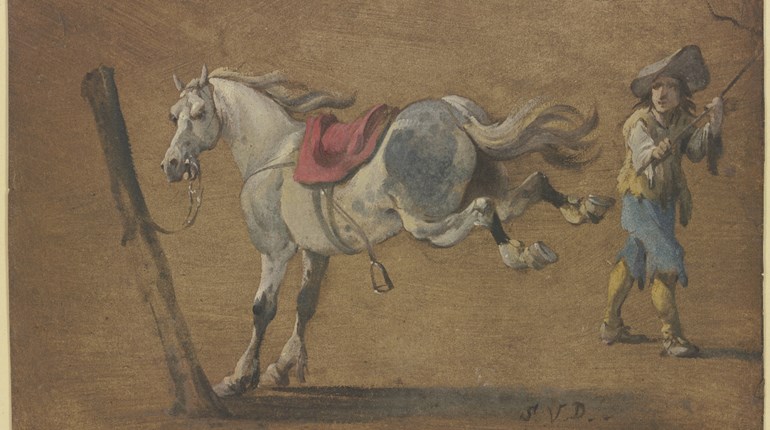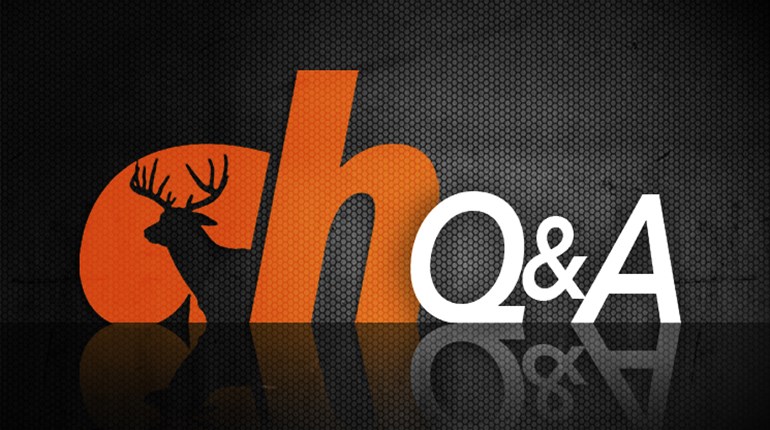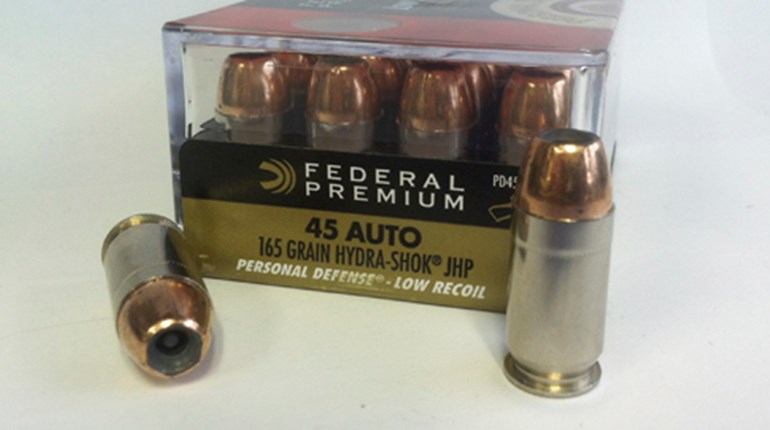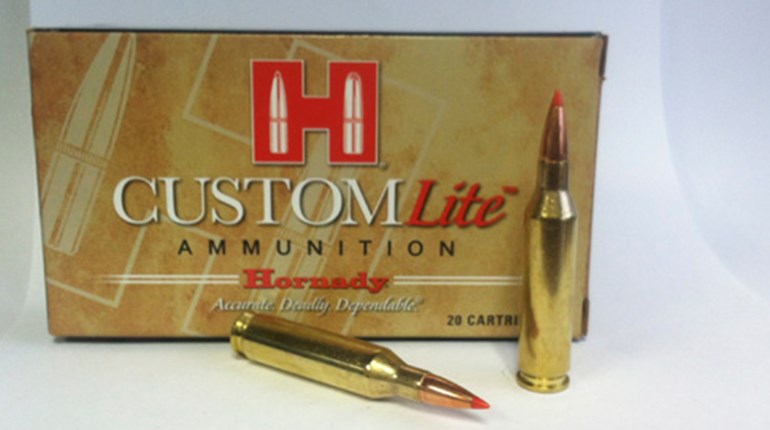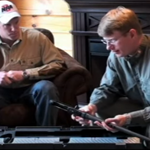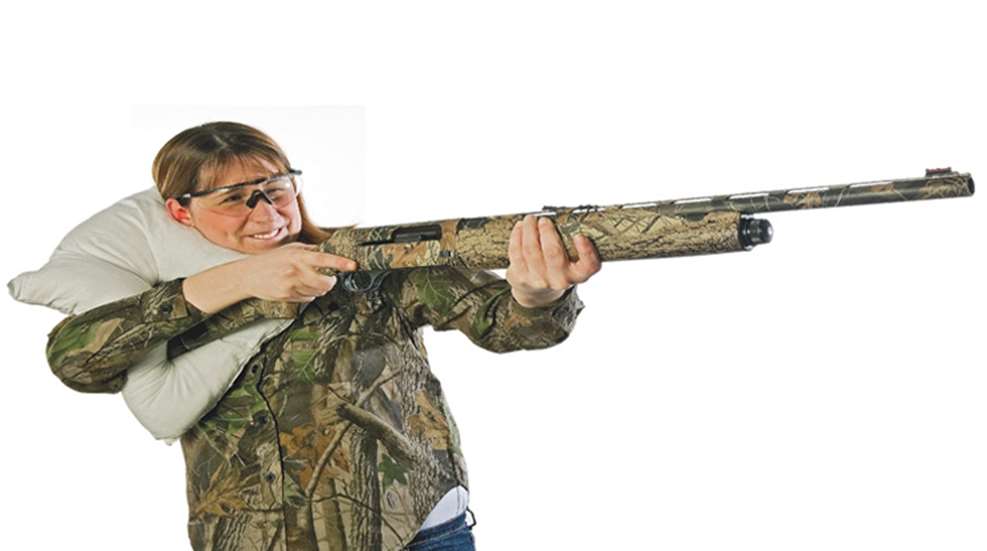
Recoil is no fun. Whether you are eight or 80, recoil is one of the biggest factors that leads to inaccurate shooting. Recoil has an evil cousin, muzzle blast, which also creates bad habits, like flinching. This article will discuss recoil, where it comes from, why it can make a shooter less accurate and, most importantly, what you can do to overcome its negative effects.
Where does recoil come from? It starts with Newton's Third Law, which states: "For every action there is an equal and opposite reaction." When it comes to recoil, the "action" begins the moment the primer ignites the propellant charge. Once the propellant is burning, the bullet and propellant are on their way down the barrel. As the bullet and mass of burning propellant increase in speed they begin to create rearward force, or recoil. When the bullet and propellant-now mostly burned gases-reach the muzzle, the bullet is at its peak velocity. When the bullet exits, the gases that are behind the bullet are also rushing out of the muzzle, which creates a "rocket nozzle" effect, which adds to recoil. This is when a secondary effect, muzzle blast, shows up. The more pressure there is at the muzzle when the bullet exits, the more recoil and muzzle blast are created.
So how and why can recoil and muzzle blast create bad shooting habits? What do you do when you hear a loud noise that you're not expecting? Or if someone walks up and pushes you unexpectedly? The reaction is one that comes from the most primitive part of our brains, and it is the first step in our "fight or flight" reaction. Our body tenses up as we prepare for what's coming next. One of the keys to becoming a good shooter is to understand this reaction, then train so your muscles and brain learn not to be startled when shooting. If you're shooting a gun that is uncomfortable due to improper fit, too much recoil or too much muzzle blast, odds are that it's really going to magnify these bad habits.
Now that we know what recoil and muzzle blast are and where they come from, we can address and overcome. Like the great philosopher Sun Tzu said, "Know your enemy and know yourself, and you can fight a hundred battles without disaster." Recoil and muzzle blast are the enemies of good shooting. To get set up for a lifetime of successful, accurate shooting, selecting the proper gun, cartridge and ammunition, muzzle brakes and recoil pad are all important things to consider when getting started.
Choosing the proper gun is one of the most important decisions in a beginning shooter's career. There are a lot of things that should be considered when selecting a gun: length-of-pull (LOP), weight, comb height and action type, for starters. Selecting the proper chambering is also important. Many shooters start out with BB guns; the logical progression is to a .22 LR. This transition makes a great deal of sense because the lack of recoil and muzzle blast from both of these make it easy to focus on shooting fundamentals. It's important to select a gun that fits properly. If you're small statured, there are many guns out there with reduced stock dimensions (which we cover regularly in this publication-check our archives for more). One key way to tell is simple: The well-proportioned gun will "feel" right. When you put it to your shoulder, the sights will line up naturally with your eye and it will feel like you're putting on your favorite pair of boots.
When a beginning shooter makes the transition to a centerfire rifle, it's important to consider things such as the type of shooting you will be doing, regulations that define legal hunting cartridges and ammunition availability. For example, if you're a target shooter, a .223 is a fine choice, offering accuracy and low recoil...but in many states, that chambering is not legal for big-game hunting, so if big-game hunting is your thing, you'll want to move up.
One key thing to know is that you don't need to start with a magnum cartridge. Magnum cartridges can really kick, and if recoil's a problem, your learning curve for shooting wil be much steeper. It's true that there are circumstances when a larger cartridge is necessary; for example, if you will be hunting elk. In that case, cartridges like the 270 Winchester, or 6.5 Creedmoor are excellent choices. Odds are a lot of the people you will be hunting with will be shooting 7mm Rem. Mag. or .300 Win. Mag., but know this: A smaller bullet that you're able to place cleanly in the vitals is much more effective than a heavy magnum that misses the vitals because you flinched.
Another way to reduce recoil is to use ammunition designed for that purpose. Hornady's Custom Lite ammunition, for example, is a great way to make rifle shooting easier on you. Remington Ammunition also offers its Express Managed-Recoil line for shotguns.
There is no doubt you'll hear folks talking about semi-automatic rifles creating less recoil than bolt-action and other fixed-breech guns. This is true, but a semi-automatic action does not reduce recoil enough to outweigh proper cartridge selection. Another way to reduce recoil that seems to have picked up steam in recent years is the use of muzzle brakes. While muzzle brakes do reduce recoil, most of them increase muzzle blast, and in most cases what you lose in recoil, you gain in muzzle blast. One muzzle brake that this author has had a lot of success with, however, is the Battlecomp. Its design effectively reduces recoil without a significant increase in muzzle blast. Recoil pads are another way to deal with recoil, and they have improved significantly in the past decade, with LimbSavr leading the charge. The thing to keep in mind with recoil pads is that, unless you are cutting your stock, they will change the length-of-pull and the way your gun fits. They can help to reduce felt recoil, but again, they are no substitute for a gun that fits properly chambered in a cartridge that is appropriate for your needs.
In closing, recoil and muzzle blast aren't things you should be scared of; they are a part of shooting, and they're not going away. Newton's Third Law says so. However, there are things you can do. Start by finding a good coach who can help you select the right gun for your needs and make sure your stance is helping you support the gun properly. Next, make sure you spend lots of time shooting it, so you can grow accustomed to the way it feels. Shooting is a lifelong discipline, and we should always be learning. Understanding where recoil comes from will help you to avoid it when possible and manage it when the situation requires a bigger hammer.













